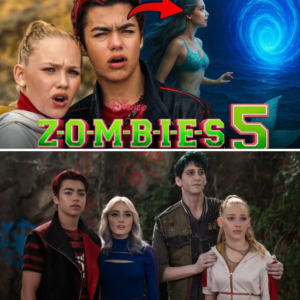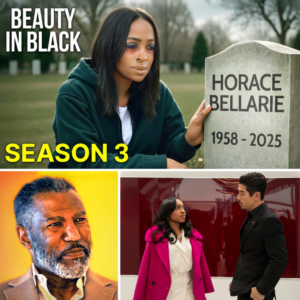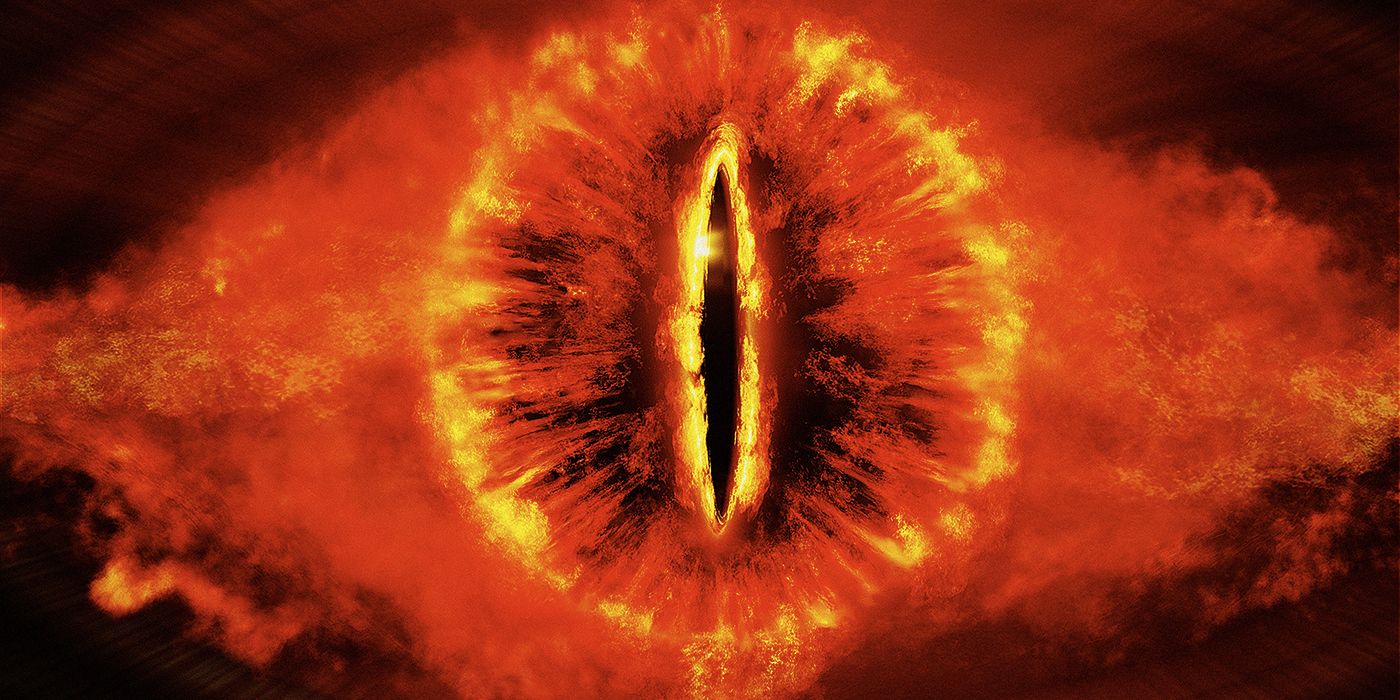
There’s no doubt that Peter Jackson‘s The Lord of the Rings trilogy did some marvelous things for Middle-earth. Propelling J.R.R. Tolkien‘s original material into the spotlight and adapting it earnestly was something that most Hollywood studios didn’t think was possible. Yet, Jackson proved that audiences were as invested in Tolkien’s writings as he was. While the filmmaker has been critiqued throughout the years for certain changes made from the original books (and, in some cases, rightfully so), there is one change that has actively redefined the titular Lord of the Rings in the eyes of many but doesn’t quite line up with what Tolkien had in mind. Contrary to popular belief, Sauron is not a giant flaming eyeball, no matter what Peter Jackson might tell you.
Sorry, Peter Jackson, Sauron Had a Body in the Third Age
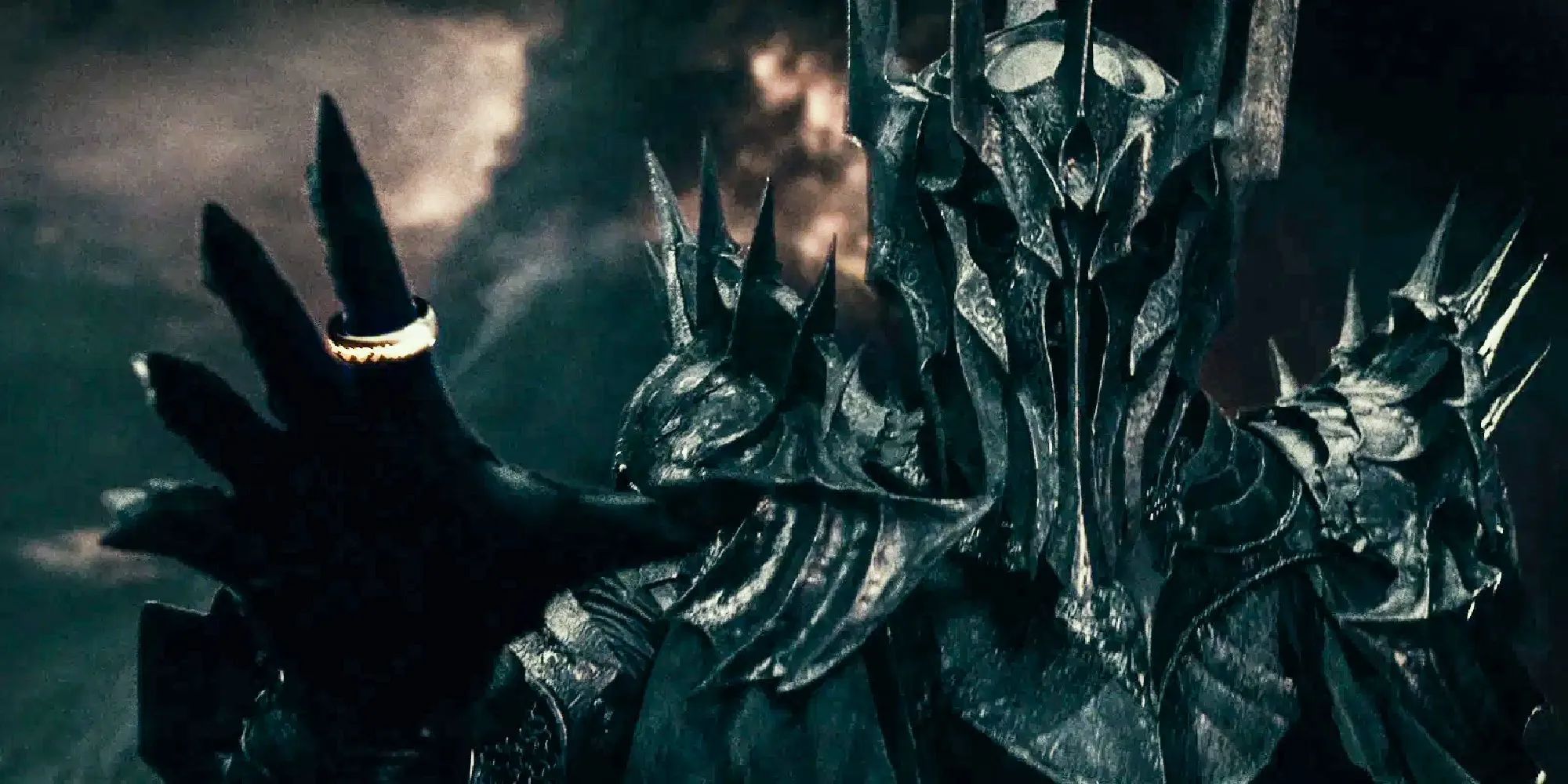
When we first meet Sauron in The Lord of the Rings: The Fellowship of the Rings, it’s in a flashback to the very end of the Second Age, which is when Prime Video’s The Rings of Power is set (where Sauron is played by Charlie Vickers). So the Dark Lord is portrayed as an armored, hulking figure who battles the likes of Elendil (Peter McKenzie), Gil-galad (Mark Ferguson), Elrond (Hugo Weaving), and Isildur (Harry Sinclair). But all of that changes when the One Ring is removed from Sauron’s finger, and his defeat at Isildur’s hand renders him an immortal spirit. In The Hobbit trilogy, Jackson expands on this further as Sauron begins manifesting his spiritual presence in the unseen world, now calling himself the Necromancer.
But this isn’t how it all played out in Tolkien’s books. Sure, Isildur still defeats Sauron by cutting off the One Ring, and, yes, Sauron still does appear as the Necromancer during the time of The Hobbit, but his defeat in the Second Age doesn’t strip the Dark Lord of his body permanently. Instead, Tolkien describes Sauron in numerous ways throughout The Lord of the Rings, with characters like Aragorn, Denethor, and even Gollum implying that he is a physical presence in the seen world. “He has only four [fingers] on the Black Hand,” Gollum says when describing the torture that Sauron put him through, “but they are enough.” In fact, at the very end of The Return of the King, when the One Ring is destroyed in Mount Doom, Sauron’s physical form is destroyed, and he’s turned into a spiritual dark cloud that hovers over Mordor. Eventually, a wind blows him away, never to be seen again.
The books include an Eye of Sauron, but it’s more than just Sauron’s spiritual presence. Originally crafted by the Dark Lord in the Second Age, the symbol continued into the Third, representing Sauron’s power over his realm. The Orcs wear the Great Eye into battle (we see this even in Jackson’s trilogy), and it’s a horrible sight for all. Of course, there is an actual Eye of Sauron at the top of Barad-dûr in Mordor, too. Tolkien describes it this way: “One moment only it stared out, but as from some great window immeasurably high there stabbed northward a flame of red, the flicker of a piercing Eye; and then the shadows were furled again and the terrible vision was removed.” This is likely the descriptor that inspired Jackson to turn Sauron himself into the Great Eye, though Tolkien had no such thought.
Aragorn Nearly Battled Sauron in ‘The Return of the King’
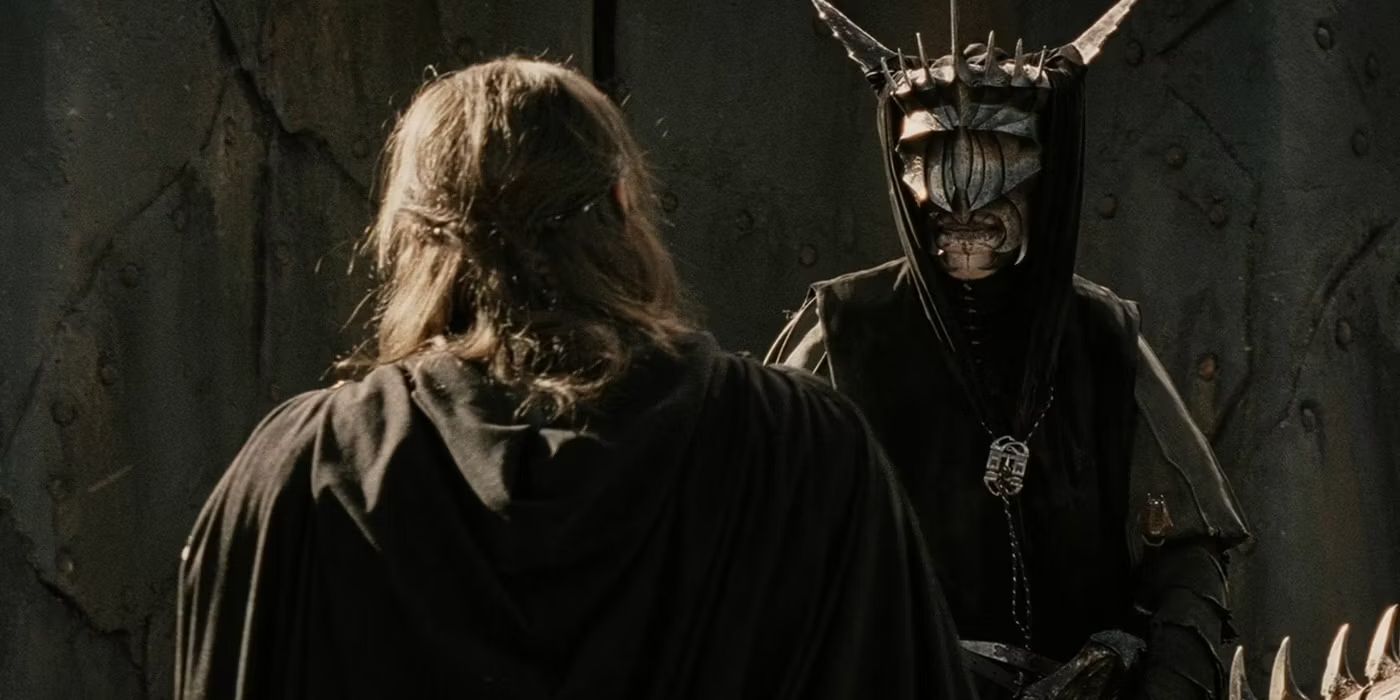

What’s especially interesting about Peter Jackson’s Lord of the Rings adaptation is that he very nearly made Sauron a physical presence. In recently uncovered deleted scenes and storyboards from The Lord of the Rings: The Return of the King, we see Viggo Mortensen‘s Aragorn pitted against the Dark Lord, who appears on the battlefield in his original form. It’s an incredible moment that we wish had been included in the film, even if a one-on-one confrontation between Aragorn and Sauron never actually took place in the books. Instead, we got to see Aragorn cut off the head of the Mouth of Sauron (Bruce Spence), a messenger of the Dark Lord who looks pretty ghoulish himself.
Of course, Jackson opted against including a physical Saruon in his film (apart from the Second Age flashbacks), instead showing the villain’s defeat in The Return of the King through the destruction of both the One Ring and Barad-dûr, Sauron’s dark tower in the heart of Mordor. Fans can debate whether they agree with these changes, but if you’re looking for a physical Sauron, at least we’re getting a pretty decent (and physical) adaptation of the character on The Rings of Power.
The Lord of the Rings trilogy is available for streaming on Max.

